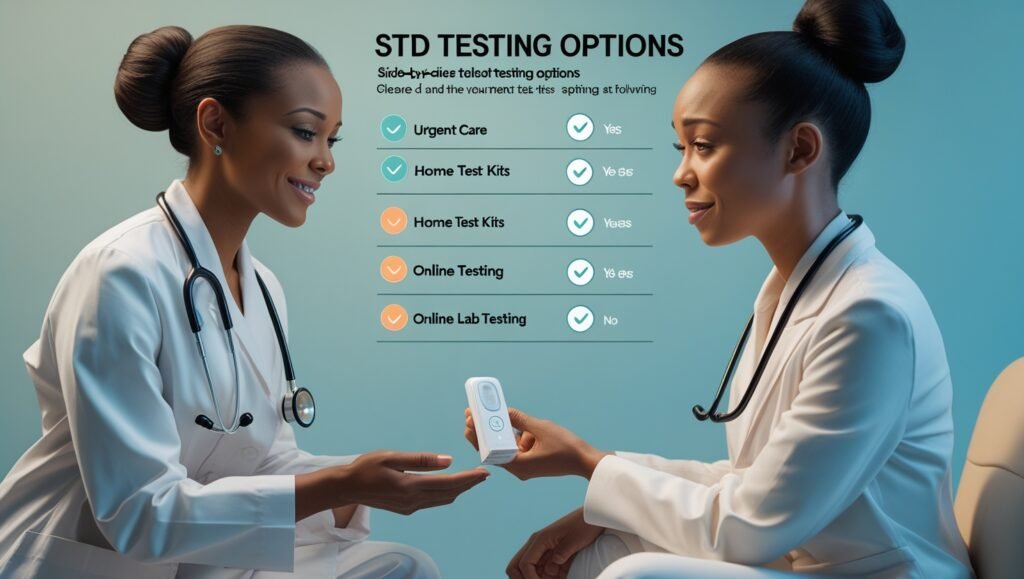Physical Address
304 North Cardinal St.
Dorchester Center, MA 02124
Physical Address
304 North Cardinal St.
Dorchester Center, MA 02124


Imagine this: You’re in a new relationship, everything feels perfect, and then the thought crosses your mind—when was the last time you got tested? You’re not alone. Millions of people wonder the same thing, but many avoid it out of fear, embarrassment, or simply not knowing when and how often to get tested. The truth? STD testing is one of the most responsible things you can do for yourself and your partner.
So, how often should you get tested for STDs? The answer depends on your lifestyle, risk factors, and overall sexual health. In this guide, experts break it down so you can stay informed, healthy, and stress-free.

STD testing isn’t one-size-fits-all. Your testing frequency should be based on your sexual activity, relationship status, and potential exposure risks. Here’s what the experts recommend:
✅ Testing Frequency: Every 3–6 months
✅ Why? If you have multiple partners or engage in casual encounters, your risk of exposure increases. Regular testing ensures early detection and treatment.
✅ Testing Frequency: Once a year (or before entering a new relationship)
✅ Why? Even in long-term relationships, getting tested annually is a good practice for both partners to maintain peace of mind and trust.
✅ Testing Frequency: 2 weeks after exposure, then again after 3 months (for accuracy)
✅ Why? Some STDs take time to show up in tests. If you’ve had unprotected sex, a follow-up test ensures you don’t miss a delayed diagnosis.
✅ Testing Frequency: During early pregnancy and possibly again in the third trimester
✅ Why? Some STDs can be passed to the baby during pregnancy or delivery. Testing ensures the health and safety of both mother and child.
✅ Testing Frequency: As recommended by your doctor (usually every 3-6 months)
✅ Why? Having an STD once doesn’t mean you’re immune. Regular checkups help ensure successful treatment and prevent reinfection.

Now that you know how often to get tested, the next question is: Where should you go? Here are your best options:
1️⃣ Urgent Care Clinics: Fast, convenient, and no appointment needed
2️⃣ Doctor’s Office: Reliable but may take longer for results
3️⃣ Planned Parenthood & Health Clinics: Affordable, judgment-free testing
4️⃣ At-Home Testing Kits: Discreet, private, and easy to use
5️⃣ Online Lab Testing Services: Order tests online and visit a certified lab for fast results

Even if you’re not due for a routine test, certain symptoms mean you should get tested immediately:
❗ Painful urination
❗ Unusual discharge (yellow, green, or cloudy)
❗ Itching, sores, or blisters in genital areas
❗ Unexplained fatigue or flu-like symptoms
❗ Lower abdominal pain
However, many STDs show zero symptoms at first. That’s why routine testing is so important—even if you feel fine.

🚫 Myth: “If I don’t have symptoms, I don’t need to get tested.”
✅ Fact: Many STDs, like chlamydia and HPV, can be completely silent for months or even years.
🚫 Myth: “Only people with multiple partners need STD testing.”
✅ Fact: Even in committed relationships, it’s still important to test regularly.
🚫 Myth: “STD testing is expensive.”
✅ Fact: Many clinics offer free or low-cost STD testing, and online lab services make it more affordable than ever.

STD testing doesn’t have to be awkward, expensive, or time-consuming. Whether you go to a clinic, order a test online, or use a discreet at-home kit, staying on top of your sexual health is one of the best things you can do for yourself.
🔹 Know your status
🔹 Protect your health
🔹 Take control of your future
When was your last STD test? If you can’t remember, it might be time to schedule one today! Your health matters—get tested and stay safe. 💙